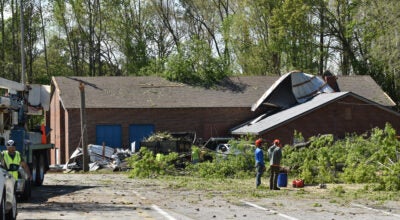Blasting planned along I-85 in Davidson County
Published 12:00 am Thursday, June 20, 2013
Work crews will begin blasting along I-85 just south of Clark Road in Davidson County, starting Tuesday, June 25, at lunchtime. The blasting is a necessary step to widen 3.8 miles of I-85 to eight lanes from just north of N.C. 150 to just north of I-85 Business, which is part of the northern segment of the I-85 Corridor Improvement Project.
During the blasts, rolling roadblocks will be in effect. Law enforcement vehicles will pace traffic in each direction to create a buffer zone separating the traffic from the blasting location so the work can safely occur. Crews will inspect the interstate for rock and debris before the rolling roadblocks are released and traffic can flow freely again.
Blasting is expected to occur each weekday around lunchtime for approximately one week. Should the work require more days than anticipated, no blasting will occur July 3-6.
The blasting is necessary in the areas where crews will build the new lanes of I-85. The blasts will break up the hard bedrock that is close to the surface. Once the rock is fractured into smaller pieces, it can be removed with trackhoes, and drainage ditches and slopes can then be built.
The blasts will not emit more than a low popping sound and should not be felt at nearby homes or businesses. Traffic moving in the rolling roadblocks is urged to go slowly and follow the pace of the law enforcement vehicles to ensure safety.
This work is part of the long-term effort under way to widen I-85 to create four lanes in each direction. NCDOT broke ground in the fall of 2010 on the southern segment of the project, which involves replacing eight bridges and widening 3.3 miles of I-85. The northern segment extends the interstate widening by 3.8 miles from north of N.C. 150 to just north of I-85 Business.
Work on the southern segment has been completed, while work on the northern segment is anticipated to be complete by late summer. When completed, the project will help to reduce congestion, improve safety and ensure that this important piece of the region’s transportation system meets the needs of drivers into the future.





